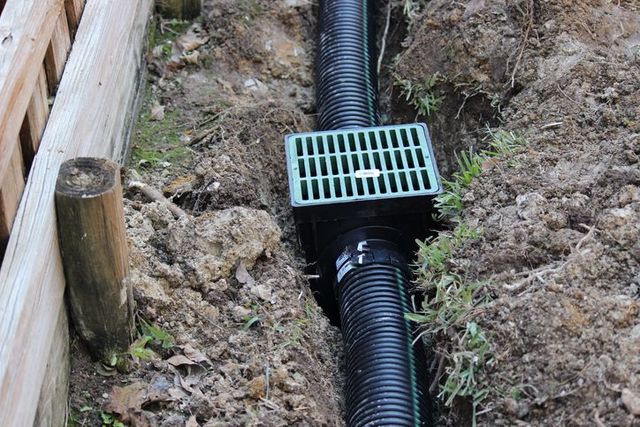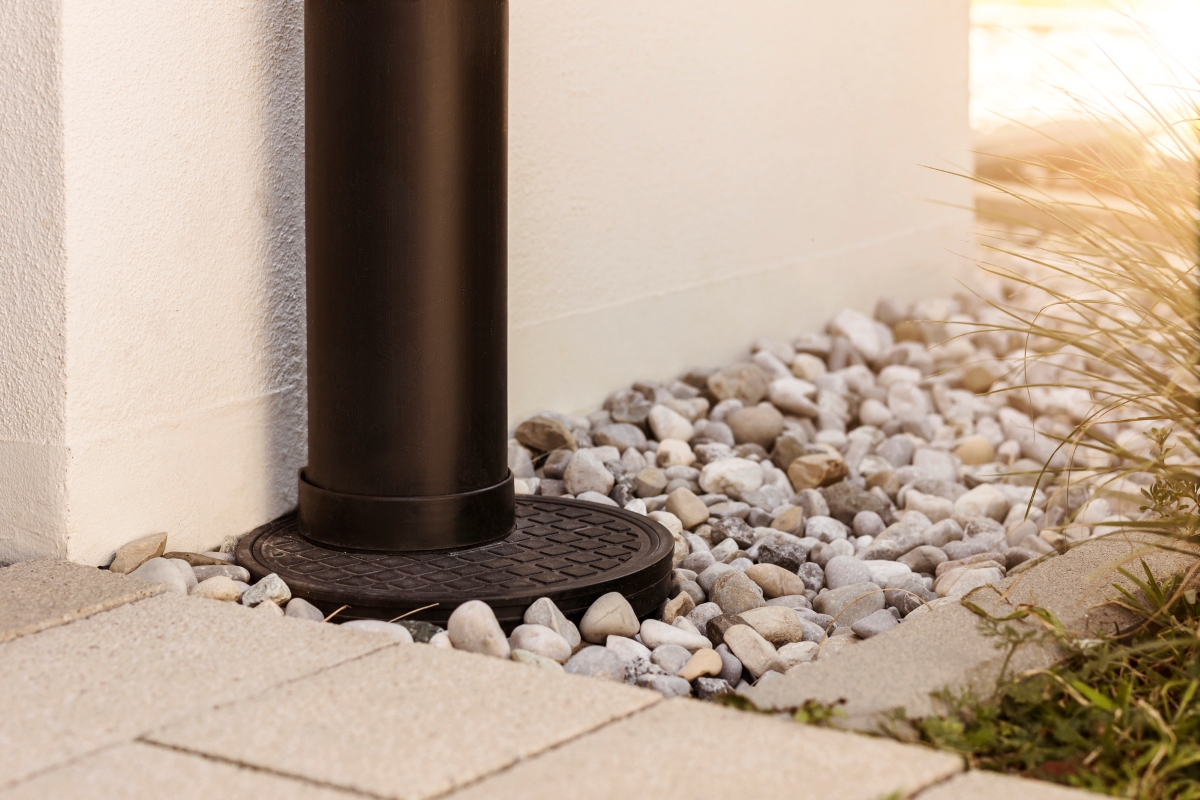Preserve Structural Honesty by Investing in a Reputable French Drain System
Preserve Structural Honesty by Investing in a Reputable French Drain System
Blog Article
Comprehending the Significance of a Sewage-disposal Tank French Drain for Effective Wastewater Monitoring
The assimilation of a septic container French drainpipe system plays a crucial role in reliable wastewater management, yet its significance is often forgotten. Recognizing the auto mechanics and advantages of such a system can illuminate its essential role in avoiding dirt saturation and improving groundwater top quality.
What Is a Sewage-disposal Tank French Drain?
A sewage-disposal tank French drain is a specific drainage system made to handle wastewater and protect against flooding in areas where traditional drainage approaches may be inadequate. This system incorporates the performances of a traditional septic storage tank with a French drain, permitting efficient wastewater treatment and efficient water diversion.

Constructed utilizing perforated pipelines laid in crushed rock trenches, a French drainpipe assists in the motion of water far from important locations. It allows for the seepage of excess water right into the surrounding dirt, advertising reliable drain while shielding the septic tank's honesty. The mix of these two systems is specifically advantageous in regions with hefty rains or bad drainage, ensuring the longevity and capability of wastewater administration systems while guarding public health and wellness and the environment.

Just How It Works in Wastewater Monitoring
In wastewater monitoring, the combination of a septic storage tank and French drain plays an important duty in guaranteeing efficient treatment and disposal of sewage. The sewage-disposal tank acts as the initial line of protection, where wastewater undergoes preliminary therapy via sedimentation and anaerobic food digestion. Solids clear up at the bottom, forming sludge, while lighter products, such as oil and oils, float to the top, producing a scum layer. This process decreases the natural tons of the wastewater before it moves forward.
When the wastewater is made clear, it streams right into the French drainpipe system, which is designed to promote further therapy and risk-free dispersal. The French drainpipe contains perforated pipes buried in crushed rock or stone, enabling treated effluent to percolate right into the bordering soil. This all-natural filtering procedure help in the elimination of microorganisms and nutrients, advertising groundwater recharge and minimizing the risk of surface contamination.
Together, the sewage-disposal tank and French drain produce a lasting approach to wastewater administration, decreasing ecological effect while making sure compliance with health and wellness guidelines. This integrated system not only shields public wellness yet also keeps the honesty of neighborhood ecosystems.
Advantages of a French Drainpipe System

The French drain system provides countless benefits that enhance both wastewater management and environmental management. Mostly, it effectively redirects water far from critical areas, decreasing the risk of flooding and dirt saturation that can jeopardize septic systems. This proactive water drainage solution aids preserve the stability of the septic storage tank by stopping excess moisture, which can result in system failure.
Additionally, a correctly installed French drainpipe lessens the possibility for groundwater contamination. By channeling wastewater far from the home, it lowers the likelihood of contaminants getting in neighborhood water sources, hence guarding public health and preserving ecological balance. The system also improves the looks and capability of exterior rooms by protecting against water build-up, which can create unsightly pools or muddy locations.
In addition, French drains pipes call for reasonably reduced maintenance contrasted to other drainage solutions, making them a This Site cost-efficient long-term investment. Their flexibility permits them to be made use of in various landscapes, suiting both business and property residential properties. Eventually, the advantages of a French drainpipe system expand beyond immediate water drainage needs, adding to sustainable wastewater administration practices and advertising ecological stewardship.
Typical Issues Without a French Drainpipe
Disregarding the installation of a French drain can lead to considerable obstacles in taking care of water flow and keeping soil stability. One of the key problems is the buildup of excess surface area water, which can pop over here produce flooding or pooling in backyards, specifically after hefty rainfall. This stagnation can saturate the dirt, bring about disintegration and jeopardizing the foundation of nearby frameworks.
Additionally, without a French drainpipe, groundwater can incorrectly infiltrate septic tanks, enhancing the danger of system failure. The resulting back-up can cause unpleasant odors, carcinogen, and costly repairs. Poor water drainage can also advertise the growth of mold and mildew, which can negatively affect interior air quality and posture wellness risks to residents.
In enhancement, the absence of an appropriate drain system may motivate the spreading of bugs and bugs, attracted to standing water. Greenery might struggle to prosper because of rising and fall dampness degrees, leading to an unclean landscape. Ultimately, the absence of a French drainpipe can result in a variety of structural and ecological issues that require considerable intervention and cost to fix. Applying a French drainpipe system is critical for effective wastewater administration and residential or commercial property protection.
Upkeep Tips for Homeowners
Routine upkeep of a French drainpipe is necessary to guarantee its optimal performance and longevity. Property owners must consistently evaluate the drainpipe for any kind of signs of obstruction or damage. This consists of checking for sediment build-up, which can impede water flow. If debris is existing, take into consideration making use of a high-pressure water jet to clear the drain.
Additionally, it is crucial to keep the location around the French drainpipe complimentary of particles, such as fallen leaves, soil, and other raw material. This will certainly protect against blocking and permit effective water drainage. Routinely cutting plants and planting away from the drain can additionally reduce origin invasion.
Moreover, house owners must keep an eye on the performance of their French drain after heavy rains. Observing just how well water is directed away from the septic tank can give understandings into its capability. It may suggest a demand for specialist evaluation. index if merging water is noted.
Last but not least, consider organizing routine expert evaluations to assess the total condition of the drain. Such aggressive procedures will help preserve the performance of your French drain and make certain effective wastewater administration for many years ahead.
Conclusion
In final thought, the septic storage tank French drainpipe system plays a vital role in effective wastewater management by making sure correct therapy of sewer and effective water diversion. Overall, the septic container French drain stands for a lasting service that benefits both industrial and domestic buildings throughout different landscapes.
The assimilation of a septic container French drainpipe system plays a crucial function in effective wastewater administration, yet its relevance is usually ignored. Inevitably, the benefits of a French drain system expand past instant drain needs, adding to lasting wastewater monitoring methods and advertising environmental stewardship.
Furthermore, without a French drain, groundwater can improperly penetrate septic systems, enhancing the threat of system failing - French Drain System. Applying a French drain system is crucial for efficient wastewater monitoring and property defense
In conclusion, the septic container French drainpipe system plays an important duty in efficient wastewater monitoring by ensuring correct therapy of sewer and efficient water diversion.
Report this page